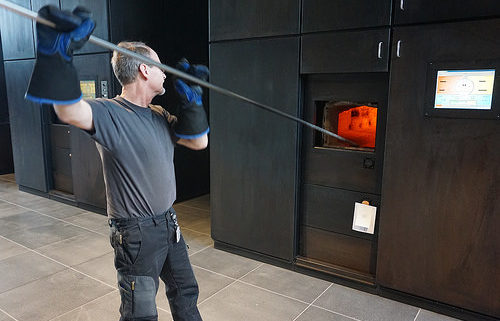A Guide to Scattering Ashes
Scattering the ashes of the departed has been a long-standing tradition for many years. Today, more families are opting to do this as a form of remembrance and a celebration of their dearly beloved who has passed on.
There are many ways to scatter the ashes the deceased beloved. You can make the ceremony as informal or as formal as you want it to be. However, there are certain things you must consider before you go on and spread the ashes somewhere.
Today, we are going to let you in on a guide to scattering ashes. Here, we will talk more about certain laws and rules surrounding the practice as well as other helpful information to guide you by.
First, let’s tackle the laws on scattering ashes.
Is it legal to scatter the ashes of your loved one?
It is not illegal to scatter ashes in Canada. There may be certain restrictions that come with the practice. However, it’s important to keep in mind that you can do so generally and at all times, within regulation and with permission.
For example, scattering the ashes on a private property is legal provided that the owner of the private property gives his/her permission to do so. Another example is that certain municipal parks allow the spreading of ashes in their lakes provided that the municipal park agreed to the process. National parks, on the other hand, prohibit the scattering of cremated remains in their waters but the ashes can be “casted in the wind”.
The practice is entirely relative to the spot. So once you have chosen a place to scatter the cremated remains in, it’s critical to learn more about the rules and regulations surround the process within that area. Even if you believe the place is public property, it is still important to know what the limitations are.
7 Different ways to scatter ashes
There are various ways you can spread the cremated remains of your beloved departed.
- Casting is the act of throwing the ashes into the wind. One important thing to remember is to be mindful on the way you are casting the ashes. You’d want t do so downwind so you don’t end up blowing the ashes towards someone else. A good marker is to throw the ashes below your waist. It’s also good to buy scattering tube or a proper urn to spread the remains with diligence.
- Trenching the ashes is another way to spread cremated remains. This is where you dig a small hole into the ground and bury the ashes in there.
- Ringing is another method to spread the ashes wherein one creates a ring shape on the ground and scatter the ashes, tracing the shape. Another way to do this is for the bereaved ones to create a human circle and trace it with the departed’s ashes.
- Raking ashes means pouring the ashes into the ground and raking them so they spread everywhere. This is often conducted in communal gardens where scattering ashes is a regular activity.
- Green burial ash scattering is a modern, green way of spreading cremated remains. Here, the ashes are put inside a biodegradable urn and are mixed with soil. In due time, the urn will grow into a tree.
- Scattering the ashes in waters is one of the most common practices around. Water-soluble urns are encouraged here so as not to have an adverse effect against the waters. Scattering in the waters can be quite laborious and we highly recommend checking in with local authorities before opting for this method. Some municipalities only allow it provided that the waters have a certain measure of depth and distance.
- Ashes sent into space are another method that’s gaining popularity. For a steep price of close to $2,000, you can have the ashes brought to outer space.
Other things to remember
One thing many don’t realize that the urn doesn’t just contain ashes. There are bits and pieces of bones in there as well.
Scattering the ashes is a highly personal experience. That’s why we encourage everyone involved to think about how you want this done and where so that everyone can come to an agreement.
Another thing worth mentioning is that you can choose not to scatter all the ashes. Some don’t realize that there is a significant amount of cremated remains in that urn. You can opt to spread them somewhere then bury the rest in a communal space or keep the urn at home.
It is also important to use an urn or a proper tube to scatter the remains instead of doing so straight from the plastic canister provided by the crematorium.




